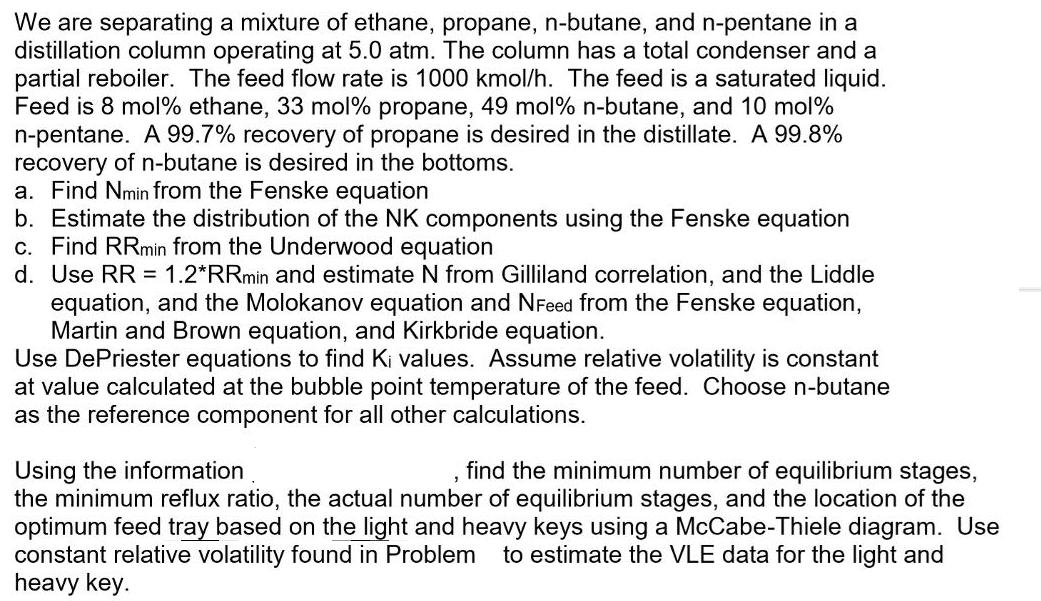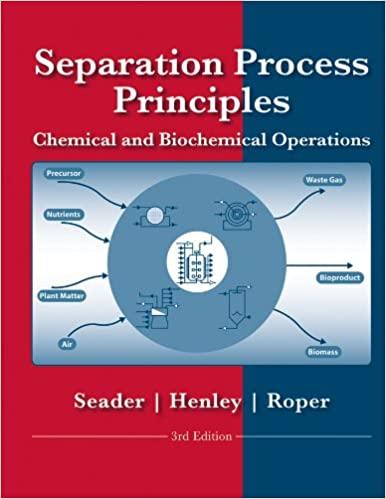Answered step by step
Verified Expert Solution
Question
1 Approved Answer
We are separating a mixture of ethane, propane, n-butane, and n-pentane in a distillation column operating at 5.0 atm. The column has a total

We are separating a mixture of ethane, propane, n-butane, and n-pentane in a distillation column operating at 5.0 atm. The column has a total condenser and a partial reboiler. The feed flow rate is 1000 kmol/h. The feed is a saturated liquid. Feed is 8 mol% ethane, 33 mol % propane, 49 mol % n-butane, and 10 mol % n-pentane. A 99.7% recovery of propane is desired in the distillate. A 99.8% recovery of n-butane is desired in the bottoms. a. Find Nmin from the Fenske equation b. Estimate the distribution of the NK components using the Fenske equation c. Find RRmin from the Underwood equation d. Use RR = 1.2*RRmin and estimate N from Gilliland correlation, and the Liddle equation, and the Molokanov equation and NFeed from the Fenske equation, Martin and Brown equation, and Kirkbride equation. Use DePriester equations to find Ki values. Assume relative volatility is constant at value calculated at the bubble point temperature of the feed. Choose n-butane as the reference component for all other calculations. Using the information find the minimum number of equilibrium stages, the minimum reflux ratio, the actual number of equilibrium stages, and the location of the optimum feed tray based on the light and heavy keys using a McCabe-Thiele diagram. Use constant relative volatility found in Problem to estimate the VLE data for the light and heavy key.
Step by Step Solution
★★★★★
3.48 Rating (155 Votes )
There are 3 Steps involved in it
Step: 1

Get Instant Access to Expert-Tailored Solutions
See step-by-step solutions with expert insights and AI powered tools for academic success
Step: 2

Step: 3

Ace Your Homework with AI
Get the answers you need in no time with our AI-driven, step-by-step assistance
Get Started


